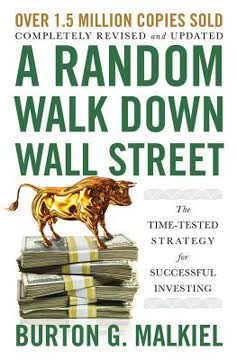Key Takeaways
1. Clarity of Thought is Paramount in Legal Writing
What’s your biggest challenge as a writer? It’s figuring out, from the mass of possibilities, exactly what your points are—and then stating them coherently, with adequate reasoning and support.
Thinking Straight. Good legal writing begins with clear thinking. Before putting pen to paper, a lawyer must identify the core message and supporting arguments. A mushy, aimless style results from a lack of clarity. Even with a well-defined point, delaying its presentation diminishes its impact.
Law School Training. Law school exposes students to diffuse writing, requiring them to extract key points from lengthy cases and articles. While this develops analytical skills, it can also accustom students to accept and produce opaque prose. Effective legal writers must resist this tendency, prioritizing clarity and directness.
Reader-Centric Approach. The goal is to ensure that the reader never struggles to grasp the writer's meaning. This requires a focused mind that discards extraneous information and swiftly communicates ideas. The ability to penetrate obscurity as a reader must be matched by the ability to avoid it as a writer.
2. Planning Maximizes Efficiency in Writing
Fast writers never bring in the Judge that early in the writing process; this enables them to use the process to discover what they have to say.
Four-Step Process. Effective writing involves a four-step process: generating ideas (Madman), organizing them (Architect), drafting the text (Carpenter), and editing (Judge). Each step requires a distinct mindset and should be approached sequentially for optimal results. Resisting the urge to edit prematurely allows for a more fluid and creative writing process.
Nonlinear Outlining. A whirlybird, a nonlinear outlining technique, encourages brainstorming and free-form categorization. It helps writers discover key points and interconnections between ideas. By jotting down ideas without worrying about order, writers can tap into their creativity and avoid writer's block.
Benefits of Planning. Planning, especially using nonlinear methods, enhances creativity, facilitates categorization, and reduces stress. It allows writers to discover key points, distill thoughts, and confidently select the lead. A well-structured plan makes drafting easier and enables editors to focus on style and form.
3. Logical Sequencing Enhances Comprehension
Order your material in a logical sequence. Present facts chronologically. Keep related material together.
Chronological Order. Presenting facts in chronological order is crucial for clarity. Disruptions in the timeline can confuse readers and obscure the narrative. Starting a narrative in the middle of the story or with later events can make it difficult for readers to follow the sequence of events.
Logical Organization. Material should be organized logically, with related information grouped together. Avoid odd conventions like alphabetized organization in contracts, which can sacrifice clarity for the sake of tradition. Instead, prioritize the logic and chronology of the subject matter.
Before-and-After Example. The impact of logical sequencing can be seen in before-and-after examples. Revisions that emphasize historical perspective, transitional words, and clear connections between ideas significantly improve comprehension and engagement. The goal is to make the argument easy to track and dramatically compelling.
4. Strategic Division Improves Readability
Divide the document into sections, and sections into subparts as needed. Use informative headings.
Importance of Headings. Dividing a document into discrete, recognizable parts enhances readability. Headings help organize thoughts, provide readers with bearings, add visual variety, make the text skimmable, and signal transitions. They also facilitate the creation of a table of contents.
Paragraph Headings. Adding headings to paragraphs, even in transactional documents, improves clarity. Headings should be informative and descriptive, allowing readers to quickly grasp the content of each section. This practice can reveal organizational deficiencies and ensure that each paragraph fits logically within the overall structure.
Point Headings in Briefs. Judges emphasize the importance of point headings in briefs. Effective point headings are complete sentences, concise, capitalized normally, and contain both a conclusion and a reason. They help judges keep their bearings, see the organization, and focus on key points.
5. Conciseness Strengthens Impact
Omit needless words.
Benefits of Conciseness. Combating verbosity makes writing faster to read, crystallizes thoughts, and enhances impact. Both writers and readers benefit from streamlined prose. Cutting unnecessary words improves clarity and vigor.
Identifying Needless Words. The English language has vast potential for verbosity. Writers often lengthen sentences subconsciously. Reversing this process requires a critical sense and a willingness to delete words without sacrificing naturalness or idiomatic expression.
Maintaining Idiomatic Expression. While tightening prose, it's crucial to maintain a natural and idiomatic style. Avoid deleting articles or words whose omission would cause misreadings. The goal is to eliminate unnecessary words while preserving clarity and flow.
6. Strategic Sentence Structure Aids Understanding
Keep the subject, the verb, and the object together—toward the beginning of the sentence.
Subject-Verb Proximity. Sentences should be structured to keep related words together, especially the subject, verb, and object. Separating these vital elements with qualifiers or conditions can complicate understanding. Putting the subject and predicate near the beginning helps readers quickly identify the action.
Prioritizing Clarity. While chronological order is important, it can sometimes be secondary to keeping related words together. Prioritizing clarity may require reordering elements to ensure that the subject and predicate are easily identifiable. This approach enhances comprehension and reduces mental effort for the reader.
Listing Conditions Separately. When sentences contain numerous qualifiers or conditions, it can be helpful to list them separately. This technique breaks down complex information into manageable parts, making the sentence easier to understand. The goal is to present information in a way that matches the reader's natural expectations.
7. Precise Word Choice Eliminates Ambiguity
Learn to detest simplifiable jargon.
Avoiding Unnecessary Jargon. Every profession has its own jargon, but unnecessary jargon should be avoided. Legalisms, or legal jargon that has an everyday English equivalent, should be part of a lawyer's reading vocabulary, not writing vocabulary. Using plain English enhances clarity and precision.
Common Legalisms. Common legalisms like "as to," "herein," and "pursuant to" can be replaced with simpler, more direct words. While these legalisms might seem precise, they often add unnecessary complexity and do not lend additional clarity to the discussion.
Impact of Plain Language. Using plain language makes legal writing more accessible and understandable. It conveys a different impression, suggesting competence and respect for the reader. The goal is to communicate effectively, not to sound lawyerlike.
8. Active Voice and Positive Language Improve Clarity
Prefer the active voice over the passive.
Advantages of Active Voice. The active voice typically requires fewer words, better reflects chronological order, aligns with reader expectations, and makes writing more vigorous and lively. It saves words, says directly who does what, and makes for better, more interesting prose.
Identifying Passive Voice. Passive voice constructions can be identified by the presence of a be-verb (is, are, was, were) followed by a past-tense verb. Learning to spot and convert passive voice constructions is a valuable skill for improving writing clarity.
Using Positive Language. Recasting negative statements as positive ones saves readers from needless mental work. Positive language is more concise, direct, and emphatic. Avoiding multiple negatives enhances clarity and reduces confusion.
9. Strategic Use of Design Elements Enhances Readability
Use a readable typeface.
Importance of Typography. Document design, including typeface and page layout, is critical to readability. Readable typography enhances the overall appearance and makes the document more inviting. Strategic use of design elements improves the retrieval of information.
Readable Typeface. Use a readable serifed typeface that resembles what is commonly seen in magazines and books. Avoid typefaces like Courier, which are blocklike and crude-looking. A well-chosen typeface enhances the reading experience.
White Space. Create ample white space to break up dense passages. Techniques like section headings, frequent paragraphing, footnoted citations, set-off lists, and bullets contribute to white space. Meaningful use of white space makes the page look inviting and roomy.
10. Continuous Improvement is Essential for Effective Legal Writing
Remember that good writing makes the reader’s job easy; bad writing makes it hard.
Embracing Constructive Criticism. Writers must embrace constructive criticism to improve their skills. Seeking feedback from experienced editors and nonprofessional readers provides valuable insights. Testing legal documents on ordinary readers can reveal areas for improvement.
Systematic Self-Editing. The LawProse Editing Method provides a systematic approach to self-editing. It involves multiple passes, focusing on basic edits, refining edits, and structural edits. This method helps writers identify and correct errors they might otherwise overlook.
Lifelong Learning. Effective legal writing is a continuous journey. By cultivating empathy for readers, monitoring readerly likes and dislikes, and seeking ongoing improvement, writers can achieve clarity, precision, and impact in their prose. The goal is to make the reader's job easy, not hard.
Last updated:
FAQ
1. What is Legal Writing in Plain English by Bryan A. Garner about?
- Practical legal writing guide: The book provides a hands-on, comprehensive approach to improving legal writing for students, lawyers, and judges.
- Emphasis on clarity: Garner advocates for writing in plain English, avoiding legalese and unnecessary complexity to make legal documents clear and accessible.
- Covers all legal writing types: It addresses analytical, persuasive, and drafting skills, as well as document design and ongoing improvement.
- Includes exercises: Each principle is accompanied by practical exercises to reinforce learning and application.
2. Why should I read Legal Writing in Plain English by Bryan A. Garner?
- Breaks poor writing habits: The book tackles common issues like wordiness, jargon, and unreadable prose, offering tools to write more effectively.
- Career advancement: Strong writing skills are highly valued by legal employers, and mastering them can lead to better job prospects and promotions.
- Practical, self-study format: Exercises at various levels make it suitable for both individual and group learning.
- Enhances reader engagement: The advice helps writers respect the reader’s time and intelligence, making legal documents more persuasive and effective.
3. What are the key takeaways from Legal Writing in Plain English by Bryan A. Garner?
- Clarity is paramount: Legal writing should be straightforward, robust, and direct, prioritizing the reader’s understanding.
- Plan before writing: Use nonlinear outlining and a four-phase writing process (Madman, Architect, Carpenter, Judge) to organize thoughts and drafts.
- Edit ruthlessly: Omit needless words, prefer active voice, and keep sentences concise for maximum impact.
- Design matters: Good document design, including typography and white space, improves readability and engagement.
4. What are the main principles for all legal writing in Legal Writing in Plain English?
- Frame your thoughts: Think through your message before writing and use nonlinear outlines to organize ideas.
- Phrase sentences clearly: Omit unnecessary words, keep sentences around 20 words, and use parallel structure and active voice.
- Choose words carefully: Avoid jargon, use strong verbs, simplify wordy phrases, and make writing natural and speakable.
- Prioritize reader understanding: Always write with the reader’s ease and comprehension in mind.
5. How does Bryan A. Garner recommend planning and outlining legal writing projects?
- Four-phase process: Use the Madman (idea generation), Architect (structuring), Carpenter (drafting), and Judge (editing) phases for effective writing.
- Nonlinear outlining: Start with brainstorming ideas in any order, then organize them into a logical sequence.
- Separate creativity and editing: Don’t let the editing mindset interfere with idea generation to maintain productivity.
- Full-sentence outlines: Use complete sentences in outlines to clarify your arguments and facilitate drafting.
6. What sentence construction advice does Legal Writing in Plain English offer?
- Omit needless words: Streamline sentences for clarity and speed of reading.
- Keep sentences concise: Aim for an average of 20 words per sentence, varying length for rhythm.
- Subject-verb-object order: Place these elements near the beginning for clarity.
- Use parallel phrasing and active voice: These techniques make writing more direct and easier to follow.
7. How does Bryan A. Garner advise choosing words in legal writing?
- Avoid legalese: Replace complex legal terms with plain English equivalents.
- Use strong, precise verbs: Minimize forms of "to be" for more dynamic writing.
- Simplify wordy phrases: Especially those involving "of" or abstract nouns ending in -ion.
- Refer to people by name: Avoid legal labels and overuse of acronyms for clarity and humanization.
8. What are the key principles for analytical and persuasive writing in Legal Writing in Plain English?
- Three-part structure: Always include a clear introduction, body, and conclusion.
- Deep issue technique: State the question, answer, and reasons clearly and concisely on the first page.
- Effective paragraphing: Start paragraphs with topic sentences and use transitions for smooth flow.
- Address counterarguments: Tackle opposing views directly to build credibility.
9. What legal drafting techniques does Bryan A. Garner recommend in Legal Writing in Plain English?
- Write for real readers: Draft documents for clients and ordinary readers, not just judges.
- Avoid legalese and jargon: Use simple, direct language to prevent disputes and misunderstandings.
- Logical organization: Arrange provisions by importance and chronology, not alphabetically.
- Minimize definitions and cross-references: Place definitions at the end and avoid excessive cross-referencing for clarity.
10. How should legal writers handle "shall," provisos, and "and/or" according to Bryan A. Garner?
- Delete "shall": Replace it with "must" for obligations and "will" for promises to avoid ambiguity.
- Avoid provisos: Phrases like "provided that" create confusion; use clearer alternatives like subparagraphs or "but/if."
- Never use "and/or": It causes ambiguity; choose either "and" or "or" based on the intended meaning.
11. What are Bryan A. Garner’s recommendations for organizing enumerations and designing legal documents?
- Place lists at the end: Avoid starting sentences with lists to maintain clarity.
- Use parallel structure: Make list items grammatically parallel and use bullets or hanging indents for readability.
- Readable design: Use serifed typefaces, ample white space, and avoid all-caps text for better reader comfort.
- Highlight key points: Use bullets and boldface for emphasis, not all caps.
12. How does Legal Writing in Plain English by Bryan A. Garner suggest continuously improving legal writing skills?
- Seek constructive criticism: Welcome feedback from editors and nonprofessionals to spot unclear writing.
- Edit systematically: Use multiple editing passes to cut legalisms, strengthen verbs, and tighten sentences.
- Consult usage guides: Regularly check authoritative sources for grammar and style questions.
- Empathize with readers: Monitor reader preferences and always aim to make their job easier.
Review Summary
Legal Writing in Plain English receives overwhelmingly positive reviews, with readers praising its practical advice, clear examples, and engaging style. Many consider it essential for lawyers and students aiming to improve their writing. Reviewers appreciate Garner's emphasis on simplicity and clarity in legal writing. Some criticisms include the book's assumptions about available resources and treating preferences as rules. Overall, readers find it valuable for developing analytical writing skills and improving legal communication, with many recommending it beyond the legal profession.
Similar Books









Download PDF
Download EPUB
.epub digital book format is ideal for reading ebooks on phones, tablets, and e-readers.





